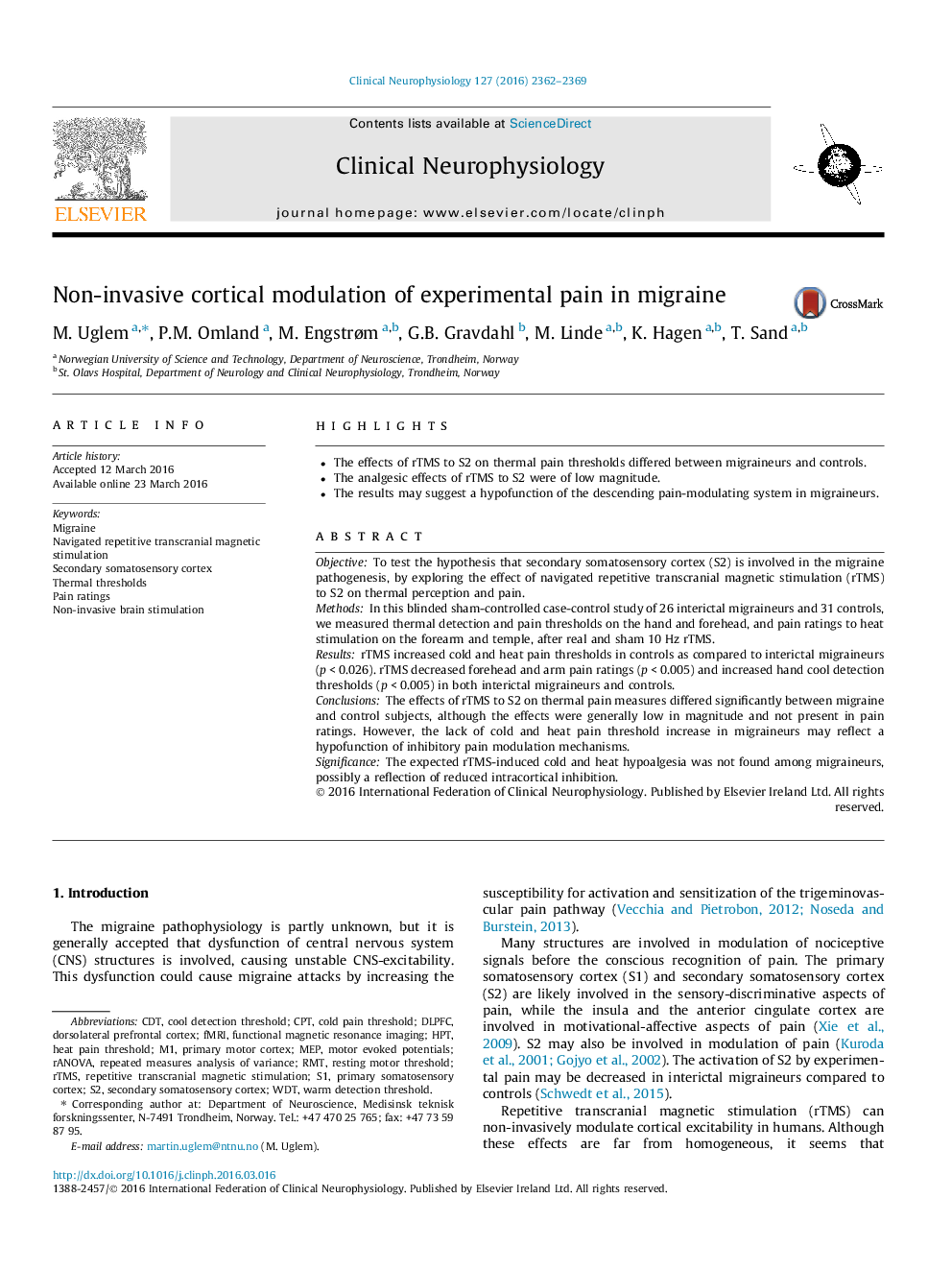| Article ID | Journal | Published Year | Pages | File Type |
|---|---|---|---|---|
| 3042754 | Clinical Neurophysiology | 2016 | 8 Pages |
•The effects of rTMS to S2 on thermal pain thresholds differed between migraineurs and controls.•The analgesic effects of rTMS to S2 were of low magnitude.•The results may suggest a hypofunction of the descending pain-modulating system in migraineurs.
ObjectiveTo test the hypothesis that secondary somatosensory cortex (S2) is involved in the migraine pathogenesis, by exploring the effect of navigated repetitive transcranial magnetic stimulation (rTMS) to S2 on thermal perception and pain.MethodsIn this blinded sham-controlled case-control study of 26 interictal migraineurs and 31 controls, we measured thermal detection and pain thresholds on the hand and forehead, and pain ratings to heat stimulation on the forearm and temple, after real and sham 10 Hz rTMS.ResultsrTMS increased cold and heat pain thresholds in controls as compared to interictal migraineurs (p < 0.026). rTMS decreased forehead and arm pain ratings (p < 0.005) and increased hand cool detection thresholds (p < 0.005) in both interictal migraineurs and controls.ConclusionsThe effects of rTMS to S2 on thermal pain measures differed significantly between migraine and control subjects, although the effects were generally low in magnitude and not present in pain ratings. However, the lack of cold and heat pain threshold increase in migraineurs may reflect a hypofunction of inhibitory pain modulation mechanisms.SignificanceThe expected rTMS-induced cold and heat hypoalgesia was not found among migraineurs, possibly a reflection of reduced intracortical inhibition.
